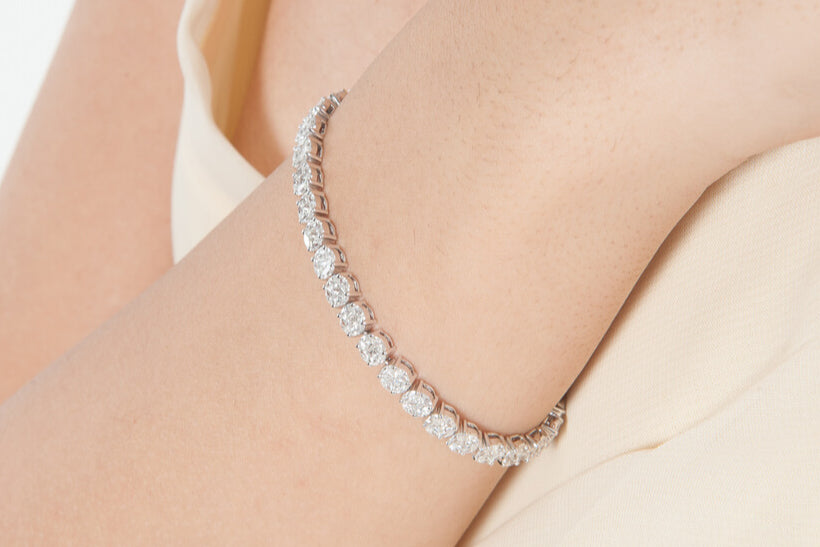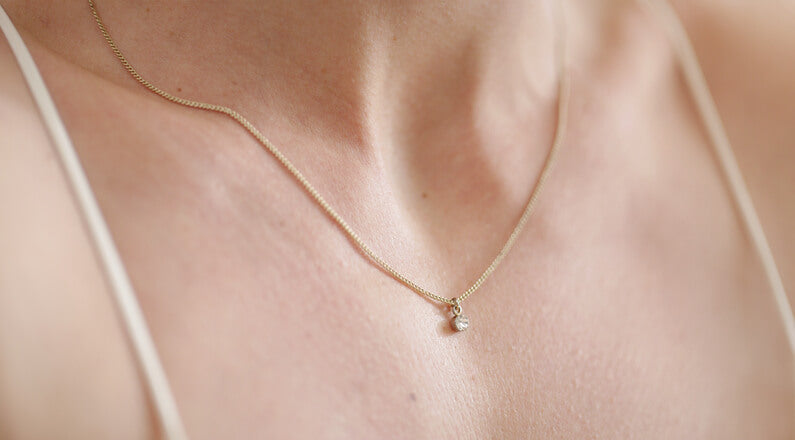History and science of moissanite
Share
The Journey of Moissanite: Unraveling the History and Science Behind the Sparkle
Moissanite, a gemstone known for its brilliant sparkle, fire, and affordability, has captured the hearts of many jewelry enthusiasts. But where did this captivating gemstone originate, and what is the science behind its extraordinary properties? In this blog post, we will delve into the fascinating history and science of moissanite, tracing its journey from a meteorite discovery to a popular choice for modern jewelry.
The Discovery of Moissanite
Moissanite's story began in 1893 when Nobel Prize-winning chemist Dr. Henri Moissan discovered tiny, sparkling crystals in a meteorite crater in Canyon Diablo, Arizona. Initially, Moissan believed he had discovered diamonds, but upon further analysis, he identified the crystals as silicon carbide (SiC). In honor of its discoverer, this new mineral was named "moissanite."
Moissanite in Nature
Natural moissanite is extremely rare and has only been found in a few locations around the world, including meteorite impact sites and certain rock formations. Due to its scarcity in nature, moissanite has been primarily produced in laboratories since the late 20th century.
The Science of Moissanite
Moissanite is composed of silicon and carbon atoms arranged in a crystalline structure. This unique arrangement is responsible for its exceptional hardness, durability, and optical properties. Moissanite ranks 9.25 on the Mohs scale of hardness, making it one of the hardest materials known to man, second only to diamond. This durability makes moissanite an excellent choice for jewelry that can withstand daily wear and tear.
The Brilliance and Fire of Moissanite
The crystalline structure of moissanite is also responsible for its incredible brilliance and fire. When light enters the stone, it is refracted and dispersed into a stunning display of colors. Moissanite's refractive index (RI) is 2.65, higher than diamond's RI of 2.42. This higher refractive index means that moissanite can bend and disperse light more effectively than diamond, resulting in greater brilliance and fire.
The Creation of Lab-Grown Moissanite
Given the rarity of natural moissanite, researchers sought ways to recreate this unique gemstone in the laboratory. In the 1990s, a company called Cree Inc. developed a process for producing high-quality silicon carbide crystals. These crystals were then refined and cut into gemstones by Charles & Colvard, the first company to introduce lab-grown moissanite to the jewelry market.
Today, several companies produce lab-grown moissanite using advanced technologies, resulting in high-quality stones with exceptional brilliance, fire, and clarity. Lab-grown moissanite offers an affordable and ethical alternative to diamonds, making it a popular choice for engagement rings, wedding bands, and other fine jewelry.
Conclusion
The history and science of moissanite reveal a fascinating journey from its discovery in a meteorite crater to its emergence as a popular choice for modern jewelry. With its captivating sparkle, fire, durability, and affordability, moissanite continues to enchant those seeking a unique and ethical alternative to traditional gemstones. As you wear your moissanite jewelry, take pride in the story behind the sparkle, knowing that you're wearing a piece of cosmic history and a testament to the marvels of science and innovation.


